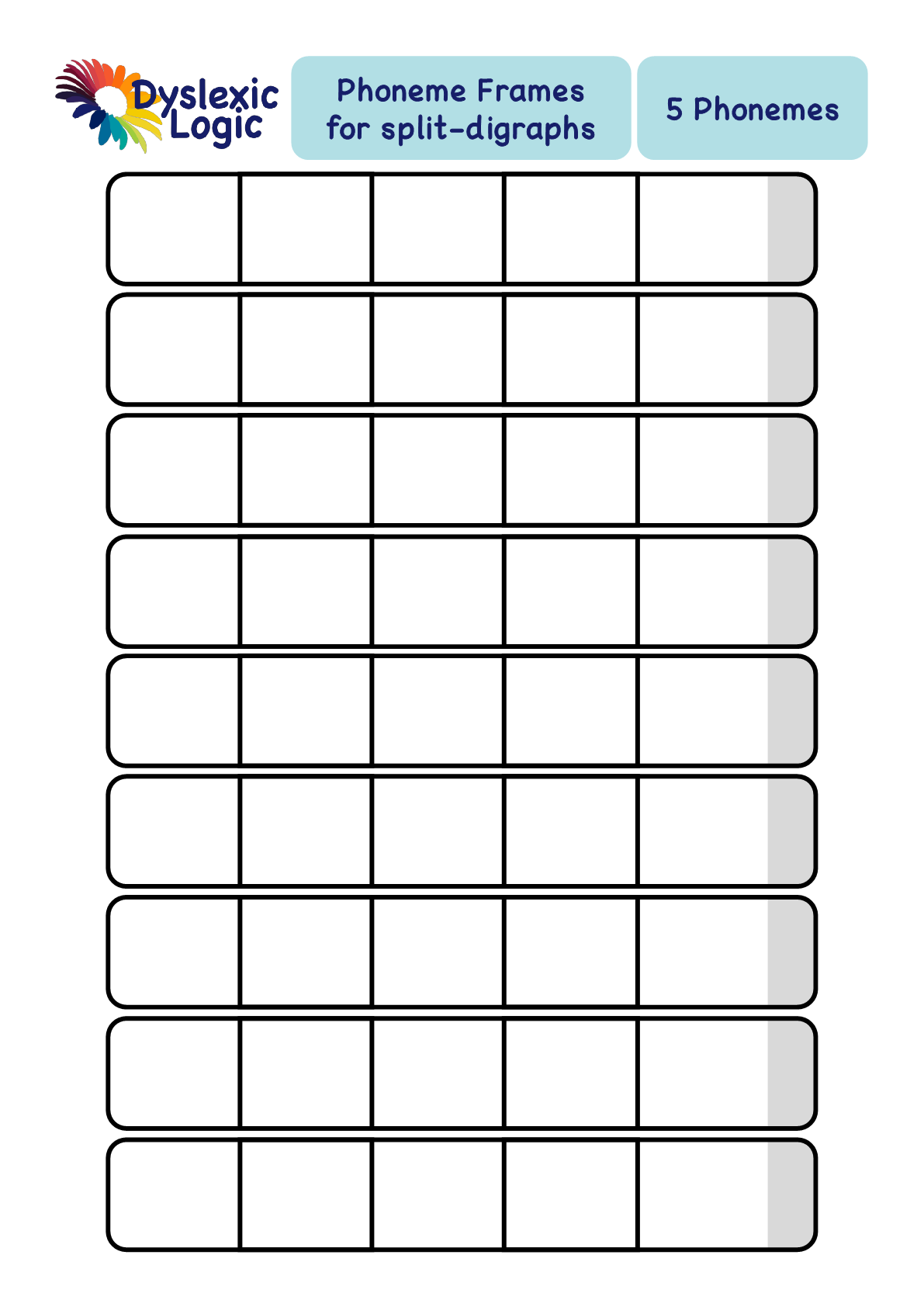How to use phoneme frames
Encourage children to sound out the target word one sound at a time. Then ask them how many sounds it has. They may find it helpful to touch one finger at a time on their hand as they sound out to keep track of the number of sounds. Ask them which phoneme frame they need to choose (i.e, the same number of sections as sounds). Then ask them to write the word, one sound at a time. Explain that each box is for one sound. Ask how many sounds and how many letters the word has. This helps children to understand that there is a complex relationship between the number of letters and sounds in English. Being able to segment a word into its grapheme units is essential for reading. Using phoneme frames can support reading fluency by helping children recognise grapheme units within the words they are reading.
Printable Phoneme Frames
Phoneme frames are great for word-level work. The frames help children to understand the difference between the number of letters and a number of sounds in a word. Print and trim the phoneme frames so that children can choose the frame they need when tackling each word.
Examples of completed phoneme frames showing graphemes, digraphs and trigraphs.
Examples of completed phoneme frames that include split digraphs.
Phoneme Frames for Split Digraphs
These phoneme frames allow children to include split digraphs in their phoneme frame work. They help to make it clear that the final ‘e’ doesn’t add an additional phoneme to the word. The final ‘e’ in the split digraph is writen in a grey area at the end of the word. These are only useful for children who have a secure understanding of split digraphs. Prior to this, sound buttoning work is more effective.












